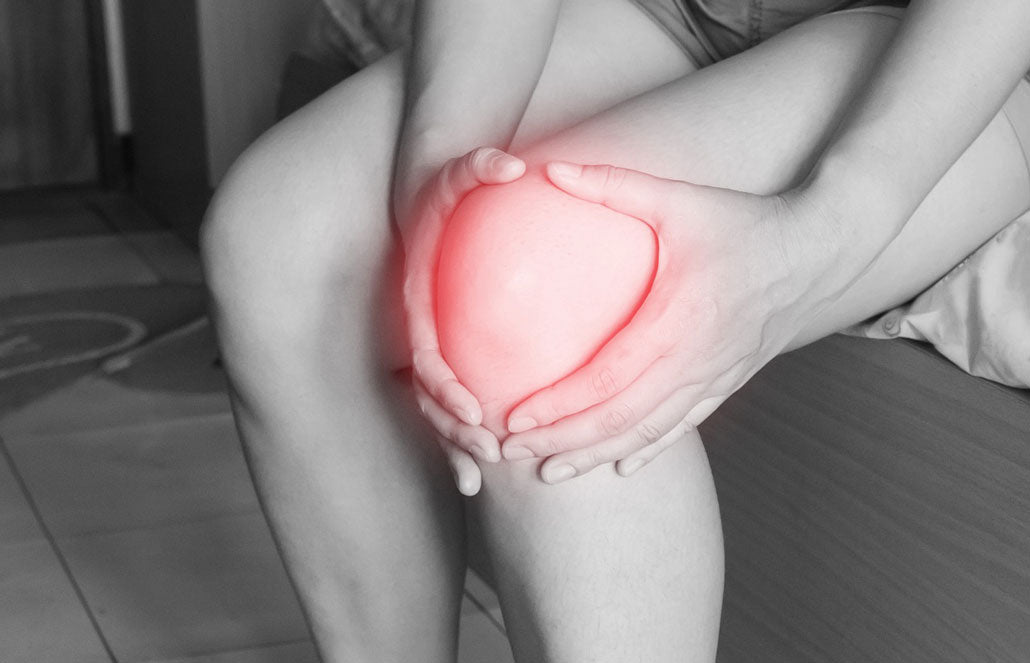
How to give knee pain the boot
Share
If you hike in the mountains regularly, chances are that you’ve had to deal with knee pain at some point – especially when carrying a heavy backpack or speed-hiking. The reason for the pain is mostly the sheer amount of force exerted on the knee joint. When walking on level ground the force can be 3 to 4-times your body weight. On steep descents this force can be doubled (see this study), putting a whopping 560kg of force on the knees of your average 70kg-sized Joe. Add the weight of a backpack or the momentum of moving quickly, and this force increases even more.
Our knees are of course designed to deal with this, but long distances, extra weight, weak supporting muscles, uneven terrain, worn shoes or old injuries are often a catalyst for debilitating pain when hiking in the hills.
 Steep descents can place enormous stress on the knees during long hikes.
Steep descents can place enormous stress on the knees during long hikes.
Understanding the knee
Most joints in your body are the ball-and-socket type, where the ball sits snugly in a hollow and can rotate as needed. The knee is a hybrid, which operates more like a hinge in a shallow socket, with the patella (kneecap) and ligaments keeping the system stable – hence the stabilising muscles are more important than with most other joints. A combination of sheer force, fatigue and weak muscles can cause injury and inflammation in this marvellous joint.
 Understanding the structure of the knee helps prevent strain and injury.
Understanding the structure of the knee helps prevent strain and injury.
What to do when you experience knee pain
If you have severe or chronic knee pain, your first port of call should be to get professional medical assistance, such as from a physiotherapist. A combination of palliative treatment, mobilisation, exercises and stretching will often help to relieve the pain. Getting rid of the pain is one thing, getting rid of the problem is another. Below are some useful things to do in the longer run to help give knee pain the boot – many of these are interconnected, so take a holistic approach and try to implement most of these tips.
Lose weight
Whether it is body weight or pack weight or both – losing weight will help a lot towards solving the problem (more so if you are physically overweight). On a hike, plan what you pack around the type and steepness of the terrain.
 A lighter backpack and steady pace can dramatically reduce joint strain.
A lighter backpack and steady pace can dramatically reduce joint strain.
Strengthen, stretch and massage supporting muscles
The muscles to take care of are your quadriceps, hamstrings, calves and the iliotibial band. You don’t need gym equipment; bodyweight-only exercises can get you started. In the longer run, exercising with weights is recommended and has additional benefits such as increased bone density and weight loss. Remember: good technique and posture are more important than heavy loads or high reps – start slow, do it right and reap the rewards.
Tip: Some bodyweight exercises you can start today include cycling, lunges, step-ups and split squats.
Food and supplements
A healthy diet improves general well-being and assists in weight loss. Some foods specifically support joint health and cartilage repair. Omega-3 fatty acids are particularly beneficial – so load up on avocados, nuts, olive and flaxseed oil, soy beans and fatty fish.
 Omega-3 rich foods can help support joint health and reduce inflammation.
Omega-3 rich foods can help support joint health and reduce inflammation.
The supplements glucosamine and chondroitin are widely used for joint health, and although studies are mixed, many hikers swear by them. Anti-inflammatory medication can help with pain, but be cautious not to mask underlying injuries. Always research what you take – there’s no magic cure, but informed choices help.
Hiking technique
The four “s”es are crucial here: sideways, slower, and smaller steps. On very steep terrain, most paths will zig-zag sideways to keep the incline manageable. Taking smaller, slower steps on descents and focusing on posture and balance will also help take strain off your knees.
 Slow, controlled steps on descents protect the knees from excessive impact.
Slow, controlled steps on descents protect the knees from excessive impact.
Trekking poles or a walking stick
Trekking poles are invaluable for reducing knee strain. They transfer weight to your arms and improve stability. Use two poles for balance on both sides – the difference on long descents is remarkable (learn more here).
 Trekking poles help distribute load and improve balance on descents.
Trekking poles help distribute load and improve balance on descents.
Check your equipment
Inspect your hiking shoes regularly – excessive wear can lead to over-pronation, while loose footwear can cause instability and extra strain. Likewise, a drooping or poorly adjusted backpack may stress your stabilising muscles, increasing fatigue and risk of injury.
 Worn boots and poor fit can contribute to knee and joint pain on the trail.
Worn boots and poor fit can contribute to knee and joint pain on the trail.
Knee braces and taping
If you have an existing injury, knee braces or kinesiology tape can provide additional support and stability. Always follow correct taping techniques or consult a physiotherapist for guidance.
Other techniques and remedies
Do you have any other tips or remedies that have helped you to overcome knee pain? Share your experience in the comments below – your insights may help fellow hikers stay pain-free.
 Stretching and recovery are key to keeping your knees strong for future hikes.
Stretching and recovery are key to keeping your knees strong for future hikes.
